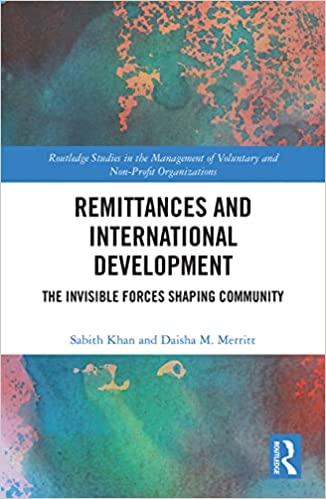Question
Please answer each question to fill 2 - 4 pages. Also, please avoid plagerism. Is change more difficult in a recession? As you read the
Please answer each question to fill 2 - 4 pages. Also, please avoid plagerism.
Is change more difficult in a recession? As you read the following account of change in a local government agency in England (based on MacLachlan, 2011), consider the following questions:
1. What features of a downturn can make managing organizational change more difficult?
2. What features of a downturn can make managing organizational change more straightforward?
3. Sunderland City Council introduced several changes to deal with the twin goals of maintaining services and reducing spending. What factors explain the success of their program?
With the recession that began in 2009, local government in England had to cut spend- ing while maintaining the same levels of services to the local population. Could costs be cut with a radical redesign of services and new ways of working? Sunderland City Council employed 8,000 people in the northeast of England, receiving two-thirds of their bud- get from central government. In 201011, funding fell 10 percent, by 58 million, and more cuts were expected over the next three years. Management wondered whether, given the sharp downturn in the economy, staff would be demotivated and concerned about layoffs. At the start of 2010, the Council launched a transformation program; could things be done differently, but without losing jobs? Unwilling to force staff to retire early or accept redeployment, the Council created an internal jobs market. This encouraged staff in areas that were shrinking to apply for jobs in expanding services, using a web-enabled assessment and employee-job matching system.
This was linked to a retraining program designed to transform the skills profile of the work- force, focusing on personality, values, and potential, as well as on knowledge and past experience. An employee portal was established to allow staff to create their own CVs. Resistance to these moves came not from staff but from managers who felt that their recruitment decisions were being constrained. For staff who were unable to find new roles, a unit was established called Switch: Staff Working In Transition and CHange. Over 200 people between roles, including managers, worked in this unit, reducing the Councils use of temporary staff on fixed-term contracts, for maternity cover, for exam- ple. The Switch team was also used to drive change, with efficiency savings projects, designing future job roles, and providing careers advice to other staff in transition. The flexible working scheme was popular, allowing staff voluntarily to reduce their paid hours (with the option to increase them again), and to purchase up to two weeks additional annual leave by spreading the salary sacrifice over the year. A be your own boss scheme offered support to employees who wanted to start their own businesses, giving them 20 days paid leave and access to a small business adviser. The 50 staff who wanted to proceed continued working part time for the Council to give them some income security while they established their businesses. Local employers were invited to borrow and to pay Council staff on secondments.
Step by Step Solution
There are 3 Steps involved in it
Step: 1

Get Instant Access to Expert-Tailored Solutions
See step-by-step solutions with expert insights and AI powered tools for academic success
Step: 2

Step: 3

Ace Your Homework with AI
Get the answers you need in no time with our AI-driven, step-by-step assistance
Get Started


